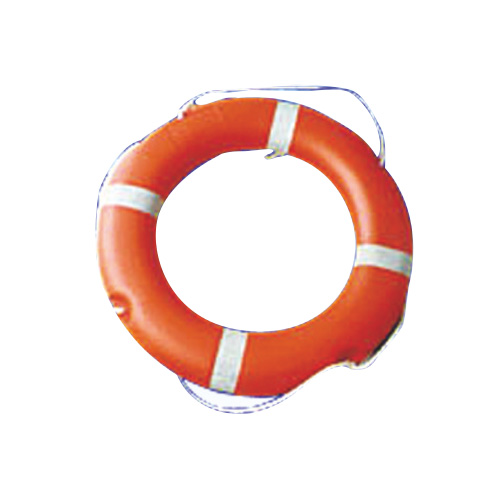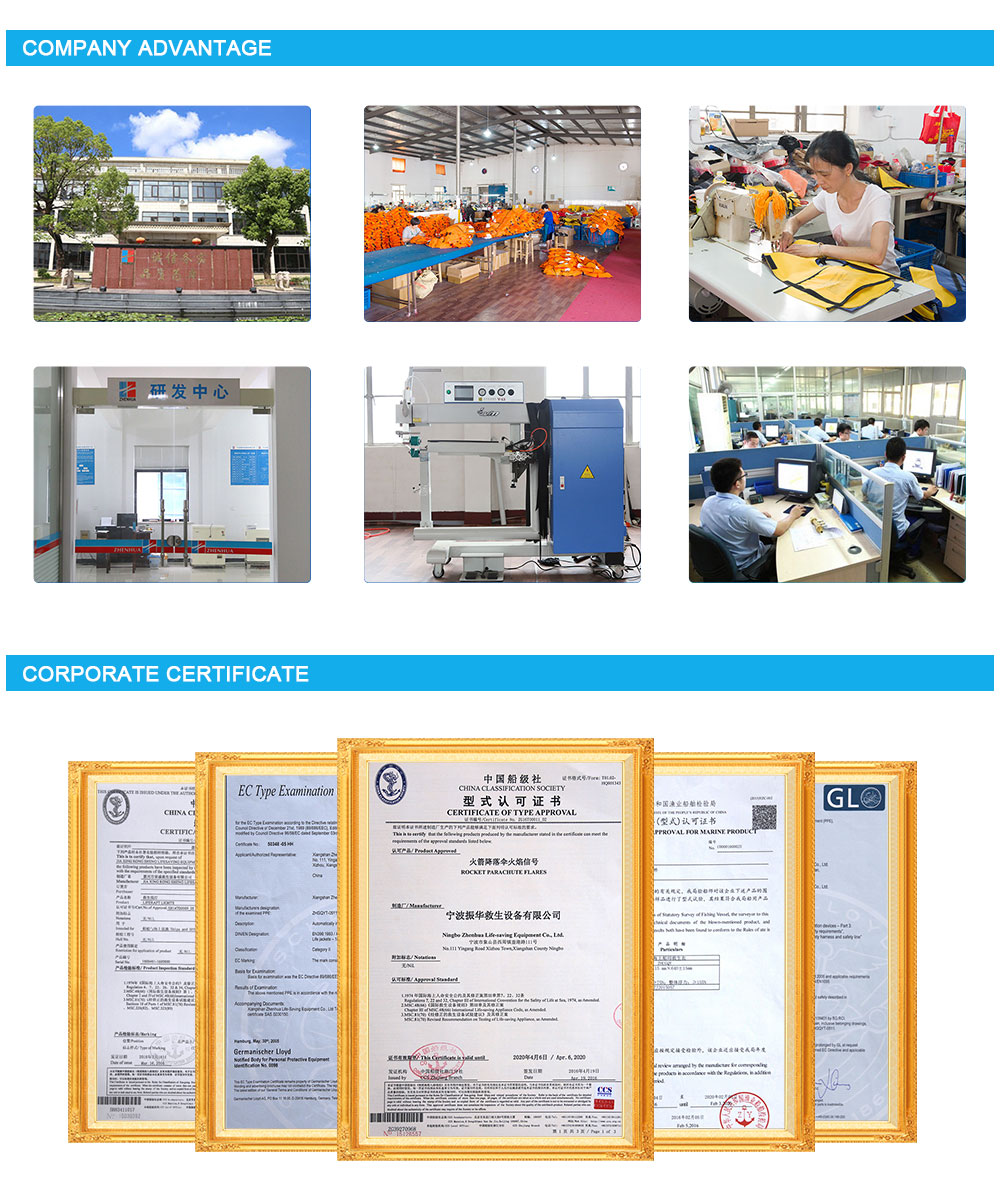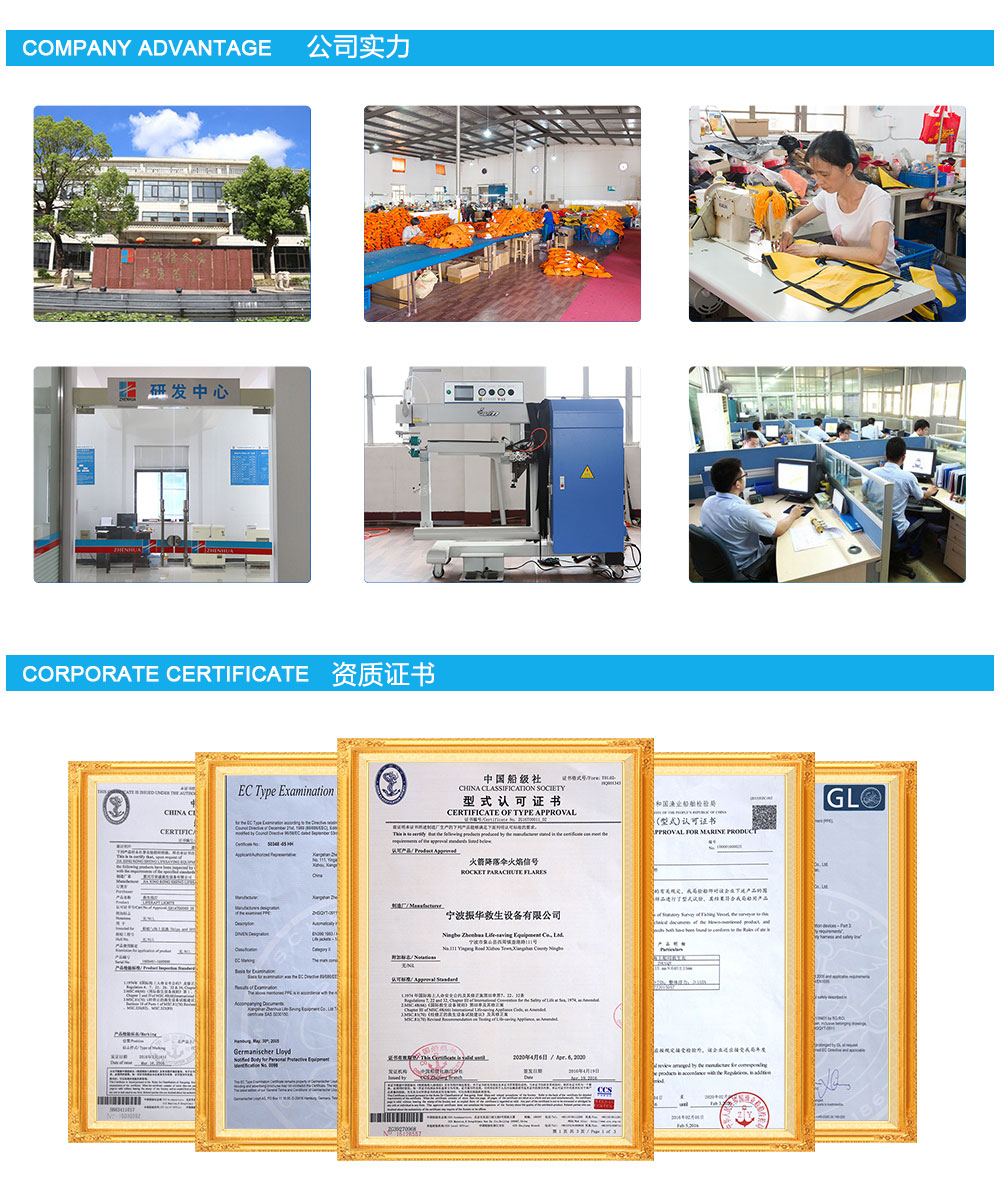



A solid lifebuoy is a type of water lifesaving equipment, usually made of cork, foam or other lightweight materials with a small specific gravity, and the outer bread is covered with canvas, plastic, and the like. The lifebuoy for swimming practice can also be made of rubber and filled with air, also known as a rubber band.
Used to release the smoke distress signal when the ship is killed for help. Polyethylene composite lifebuoy with high density polyethylene as the carcass
Lifebuoy appearance: The color of the lifebuoy should be orange-red and there is no color difference. The surface of the lifebuoy should be free from irregularities and cracks. At four equally spaced locations along the perimeter of the lifebuoy, a retroreflective tape with a width of 50 mm should be wrapped around it.
Lifebuoy appearance: The color of the lifebuoy should be orange-red and there is no color difference. The surface of the lifebuoy should be free from irregularities and cracks. At four equally spaced locations along the perimeter of the lifebuoy, a retroreflective tape with a width of 50 mm should be wrapped around it.
Dimensions: The outer diameter of the lifebuoy should be no more than 800mm, and the inner diameter should be no less than 400mm.
The outer edge of the lifebuoy shall be fitted with a floatable handle cable having a diameter of not less than 9.5 mm and a length not less than four times the outer diameter of the lifebuoy. The cable should be fastened at four equidistant positions around the ring and form four equal length grommets.
Weight: The lifebuoy should weigh more than 2.5 kg. A lifebuoy with a spontaneous smoke signal and a fast-discharge device attached to a self-illuminating floating lamp shall weigh more than 4 kg.
Materials: The material of the integral lifebuoy and the inner filling material of the inner-filled lifebuoy should be closed-cell foam.
Performance:
The lifebuoy should be resistant to high and low temperatures, without shrinkage, cracking, expansion, and decomposition.
The lifebuoy should be dropped from the specified height and should be cracked or broken.
The lifebuoy should be oil resistant, free from shrinkage, cracking, expansion, and decomposition.
The lifebuoy should be fire resistant and should not be burned or continue to melt after overheating.
The lifebuoy should be able to support 14.5kg of iron in the fresh water for 24h. In the case of free suspension, the lifebuoy should withstand a weight of 90 kg for 30 min without cracking and permanent deformation. For lifebuoys equipped with a spontaneous smoke signal and a self-illuminating floating light attached to the throwing device, the device should be triggered when released.
Attachment: The lifebuoy can be equipped with attachments, including floatable lifeline, self-illuminating floating light or spontaneous smoke signal.


